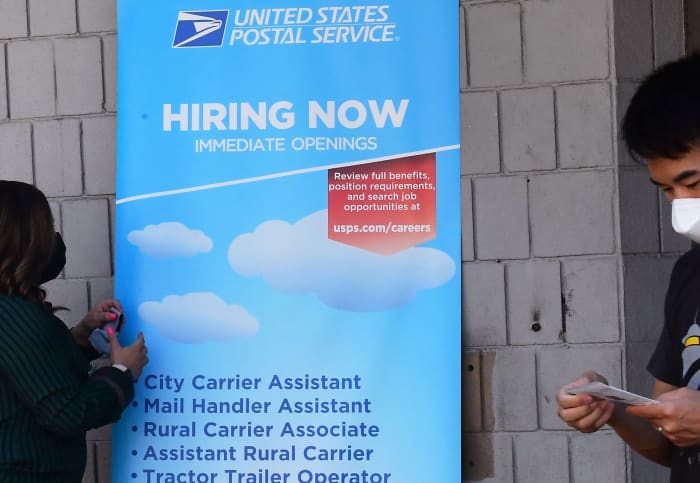U.S. jobs data triggers debate by investors over whether the labor

Frederic J. Brown/Agence France-Presse/Getty Images
September’s nonfarm payrolls report is raising questions in some investors’ minds over whether the U.S. labor market has suffered permanent pandemic-linked scarring that could keep inflation persistently higher, potentially forcing market participants and policy makers to readjust their expectations.
The so-called labor-force participation rate, or the portion of working-age people who have a job or are looking for one, was little changed at 61.6% last month — suggesting millions of Americans still remain sidelined. The rate has stayed within a narrow range since June of last year despite the reopening economy, and is 1.7 percentage points lower than where it was in February 2020 as the pandemic took hold in the U.S.
That matters because unemployment benefits for millions of Americans ended last month, an event that still wasn’t enough to bring many people back into the labor force. Meanwhile, average hourly earnings rose during September as businesses struggled to lure folks from the sidelines. Rising wages are one reason that inflation could stay elevated for longer, while forcing financial markets and policy makers to rethink their economic outlooks and expectations about policy rates, investors say.
“Without a doubt, the labor markets have been scarred, but the level of the permanent scarring has yet to be seen,” said Matt Peden, director of investments for American Beacon Advisors in Irving, Texas. “On average, labor represents a large portion of a company’s total costs structure, so the increase in wages will most likely be passed on to the consumer to maintain margins — which is inflationary.”
“The Federal Reserve will have to monitor the situation closely as wage inflation tends to be more permanent than transitory,” Peden, whose firm managed $75.2 billion in assets as of June, wrote in an email to MarketWatch. “Depending on the level of wage inflation, it could put more pressure on their `lower-for-longer’ strategy” on interest rates.
Financial markets struggled to interpret Friday’s jobs report, which reflected a much weaker-than-expected 194,000 new jobs created, but saw the jobless rate drop to 4.8% and upward payroll revisions to prior months that gave investors at least some hope. Soon after the September’s nonfarm payrolls report was released early Friday, markets whipsawed, with U.S. stock indexes, bond futures, and the U.S. Dollar Index
DXY,
all bouncing around in choppy trade.
Read More: U.S. jobs data triggers debate by investors over whether the labor
